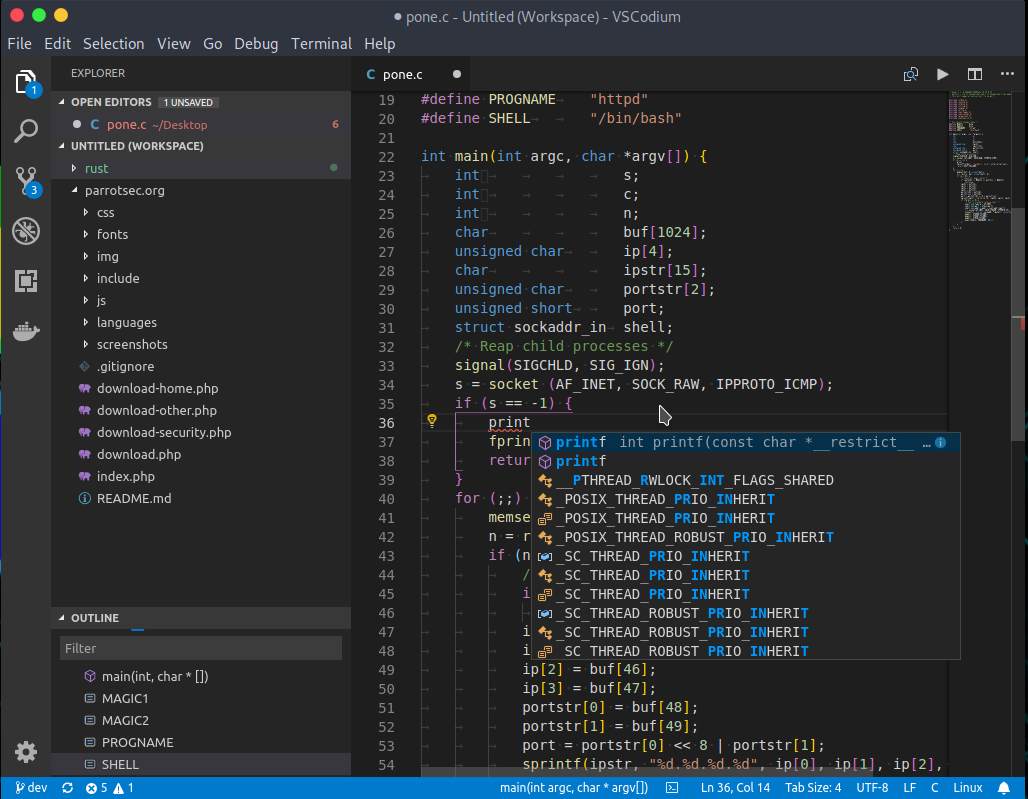- # Installation: brew cask install visual-studio-code # To view vscode information: -% brew cask info visual-studio-code visual-studio-code: 1.3.1,e6b4afa53e9c0f54edef1673de9001e9f0f547ae Microsoft Visual Studio Code, VS Code Not installed Contents Visual Studio Code.app (app) /Applications/Visual Studio Code.app/Contents/Resources/app/bin/code.
- To install the latest version, use Homebrew: brew install -cask visual-studio-code macOS integration.
- Brew help, man brew or check our documentation. First, please run brew update and brew doctor. Second, read the Troubleshooting Checklist. If you don't read these it will take us far longer to help you with your problem. We'd love you to contribute to Homebrew. First, please read our Contribution Guide and Code of.
These scripts leverage Homebrew, the package manager for Mac. Click here to learn more about Homebrew.
Brew help, man brew or check our documentation. First, please run brew update and brew doctor. Second, read the Troubleshooting Checklist. If you don't read these it will take us far longer to help you with your problem. We'd love you to contribute to Linuxbrew. First, please read our Contribution Guide and Code.
QuickStart Overview
Starting out in DataOps requires a new set of tools from what developers may have used previously. Thankfully, package managers like Chocolatey and Homebrew exist to streamline the process of getting new software installed (and keeping it updated) on your machine.
The package manager reduces the time to get software installed, saving hours of time and ensuring everyone’s machines are setup correctly with minimal effort. Here’s a quick overview of the tools you’ll install in the next section:
- A package manager: Chocolatey (for Windows) or Homebrew (for Mac)
- Docker - to run containerized apps and create your own.
- Git - a version control platform used to store and manage code.
- GitHub Desktop - a friendly GUI which works with Git and GitHub.com.
- Python - a software language useful for developing new programs and scripts, and also used for its popular package manager
pip, which allows users to install Python programs written by others. - Terraform - the leading cross-platform solution for automating Infrastructure as Code (IaC).
- VS Code - a robust, fast, and lightweight development environment (IDE).
Installing Homebrew and Core Tools
- Open “Terminal”.
Paste and run the Homebrew install script:
Install git.
Install core tools:
Installing additional tools
After following the instructions from the above, you should now have the Cakebrew app installed, which gives a friendly GUI on top of the Homebrew installer.
To install any additional programs, either open the Cakebrew app or copy-paste the below samples into a Terminal window. (You can also find additional packages at https://brew.sh.)
brew install awsclibrew install azure-clibrew install elasticsearchbrew install gradlebrew cask install anacondabrew cask install dbeaver-communitybrew cask install githubbrew cask install google-chromebrew cask install microsoft-teamsbrew cask install pgadmin4brew cask install rbrew cask install slackbrew install aws-sam-cli**You might first need to run:brew tap aws/tapbrew cask install selenium-server-standalonebrew cask install firefox
Extra Credit: Create a GitHub Account
For extra credit, visit GitHub.com and register a new account. Once you’ve created a GitHub account and installed the core software, you are all all set to contribute to open source projects in GitHub, including this one!
- Tip: Rather than create multiple accounts, we recommend using a single GitHub account for both work and personal development projects.
Related Links
- Brew QuickSetup Script: https://docs.dataops.tk/setup/brew_install.sh (source)
Visual Studio Code is a lightweight code editor with support for many programming languages through extensions
Installation


To install the latest version, use Homebrew:
macOS integration
Launch VS Code from the command line.
After that, you can launch VS Code from your terminal:
code .will open VS Code in the current directorycode myfile.txtwill openmyfile.txtin VS Code
Useful Extensions
Python

Python - Python code highlighting
To enable auto-formatting on 'Save', i.e.
⌘ + S, configure the following:Change the default formatter to
Blackinstead ofAutopep8. Critical to avoid large diffs. Go to Preferences -> User Settings and update the settingpython.formatter.providertoBlackEnable
Format on SaveSetting: Editor: Format On Save setting on Code -> Preferences -> Settings
Brew Cask Visual Studio Code
JavaScript

- ESLint - Useful to check JavaScript errors and helps in auto-formatting the code
- Prettier - JavaScript code formatter
SQL
Markdown
- Markdown Preview - Read Markdown files in VSCode

GitLens
- GitLens - Supercharge the Git capabilities built into VSCode
Docker
Brew Cask Update
- Docker - Create, manage, and debug images from within VSCode
JSON
- Paste JSON as Code - Infers types from sample JSON data, then outputs strongly typed models and serializers for working with that data in your desired programming language
Live Server
- Live Server - Launches a local development server with live reloading for both static and dynamic
VS Code Icons
- vscode-icons - Adds unique icons to distinguish different file extensions (easier to glance through your directories)
